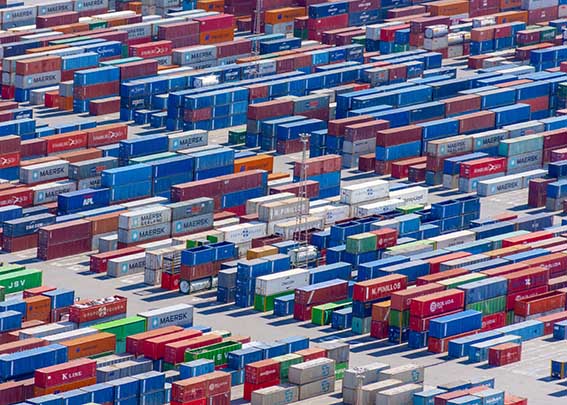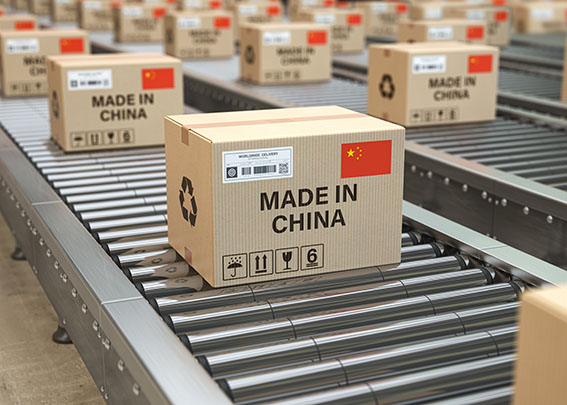
Sourcing Market Insight: Inflationary pressures are feeding into global supply chains but what does this mean for sourcing strategies?
Sourcing Market Insight – Overview
The global trade equilibrium is no longer balanced. The Pandemic initially plunged the world economy into cardiac arrest. Then, as individual markets applied their own Covid recovery plans, trade certainly picked up. But it is the disjointed nature of this recovery that is now driving supply and demand imbalance and leading to challenges in sourcing markets.
Inflationary pressures
Sourcing markets were already in flux, with strategic shifts occurring as companies looked to ‘de-risk’ their global supply chains and enhance supply chain resilience by looking at complimentary sourcing markets for their factories. The recovery in certain markets combined with devastating second, third and fourth Covid waves in others, is pointing to demand outstripping supply across multiple sectors. The result is inflationary pressures feeding into the supply chain; whether it is freight rates, commodities, labour costs or operating costs, prices are likely going in one direction for the foreseeable future, and that’s up!
In this week’s article, we are looking at what this will likely mean for sourcing markets, and whether this will accelerate the current shift away from a ‘China plus one’ sourcing strategy.
Global Commodities
Given any product cost is heavily correlated to a commodity price, it is a good place to start. Whether it is cotton through to copper, raw materials are on the rise as any Asian factory will readily tell you. Broadly, this upward pressure is likely to be for a sustained period. This is due to a combination of factors, both structural and due to short term supply constraints. The recent Producer Price Index (‘PPI’) data pointed to factory gate prices increasing 6.8% in the year to April, according to China’s National Bureau of Statistics. This increase is largely driven by rising commodity prices, with the raw materials component of PPI up 15.2% over the same period.

Although some of this rise is linked to the recovery of the global economy, some is more centred on shifts in demand oversupply. To take copper as an example, the metal has some industry analysts and CEOs pointing to a 50% rise in copper prices to $15,000 per tonne by 2025. Copper is a particularly good conductor and is therefore used in electrical wiring. With economies like China committing to build millions of new homes, there is heightened demand. In addition, many Governments around the world are committing to greener energy alternatives, and this will require more copper for the infrastructure. This at a time when copper prices post 2008 have been low and not allowed mining companies to invest the capex required to bridge the long-term supply gap of 8.2M tonnes by 2030. Demand is outstripping supply. The same is true of other metals, such as aluminium and iron ore (China is reducing output due to the removal of polluting industries). Such commodities may therefore have some time to go before prices begin to subside.
Freight Rates
On sea routes out of Asia, there is a continued expectation that rates will hold at high prices, albeit not quite as high as pre-CNY when there was significant demand for space. This is due to container equipment shortages continuing to be a problem, which is leading to space shortages as companies look to ship transpacific or to Europe. The fallout from the Evergiven Container ship in the Suez Canal will continue into May and June and is only exacerbating the capacity constraints.

Sustained high freight rates will inevitably impact landed cost, and for larger items – such as furniture – this can become prohibitive after a sustained period. We are already seeing some retailers deciding to hold shipments until rates subside to make the landed cost workable. Looking at the current market, this may be some wait, and it may be a better option to look at alternate ways of shipping the goods (such as overland by train), which take longer but are more palatable from a cost perspective.
Global Sourcing Sentiment
It, therefore, appears that inflationary pressures are here to stay over the medium term at least and these collective higher costs are already filtering through to shelves in the West. So, what does this mean for the Sourcing market?
QIMA, the Quality compliance provider, has recently conducted a survey across 700+ businesses on what global sourcing looks like in 2021 (“After the Storm: A Look at Global Sourcing in 2021”, March 2021), which draws out some valuable insight. These can be summarised as follows:
Pre-pandemic sourcing trends are still in effect.
Global buyers are continuing their move to more regionalized sourcing strategies increasingly across China, India and Vietnam.
Vietnam & India dominate China’s regional competition.
Both markets have gain popularity with Vietnam featuring particularly higher when ranked against China for US respondents (for example 33% of US Furniture is now coming from Vietnam).
Buyers reluctant to significantly cut ties with China.
China still retains its positions as the most important manufacturing partner for many of the businesses surveyed.
EU Brands are stepping up Near Shoring again.
This is a trend particularly relevant for the EU with a focus on Turkey. US businesses seem more reluctant to move away from Far East Sourcing.
Two-thirds of buyers globally are eager to continue sourcing diversification to mitigate risks in 2021.
Broadening the supply base is seen as a way of mitigating market risk and disruption.

Although this survey was conducted in March, we anticipate little change to these trends. In fact, we have been pointing to companies looking to reduce reliance on any one market where possible for the past 8 months and see little reason to change our opinion.
We would, however, anticipate broad price increases to the consumer which will help offset the freight and other commodity price rises. Even though wage inflation has generally been stagnant over the past couple of years, it remains the case that one result of the Pandemic is that savings rates in the UK, US and EU have increased dramatically. For example, the population in the UK is sitting on an estimated £180 Billion of savings since the start of the Pandemic with £3 in every £10 saved. There is, therefore, scope currently for retailers and brands to push prices to the consumer, and as the savings are spent this is likely to the case. There appears little scope for suppliers to absorb further cost increases, as they have done over the past couple of years.
Summary
Although price increases are already feeding into global supply chains, we generally expect these to be passed onto the consumer across categories. We do not, therefore, see any wholesale change to longer-term sourcing strategies. We continue to see companies embedding greater resilience into their supply chains by market diversification.
At ET2C, we look to provide our clients with sourcing market insights across our manufacturing bases. With offices in China, Vietnam, India and Turkey, we are well placed to deliver sourcing solutions to meet your needs. For more information. please contact us at contact@et2cint.com.

